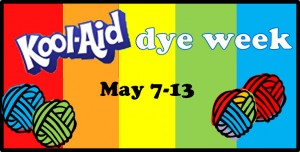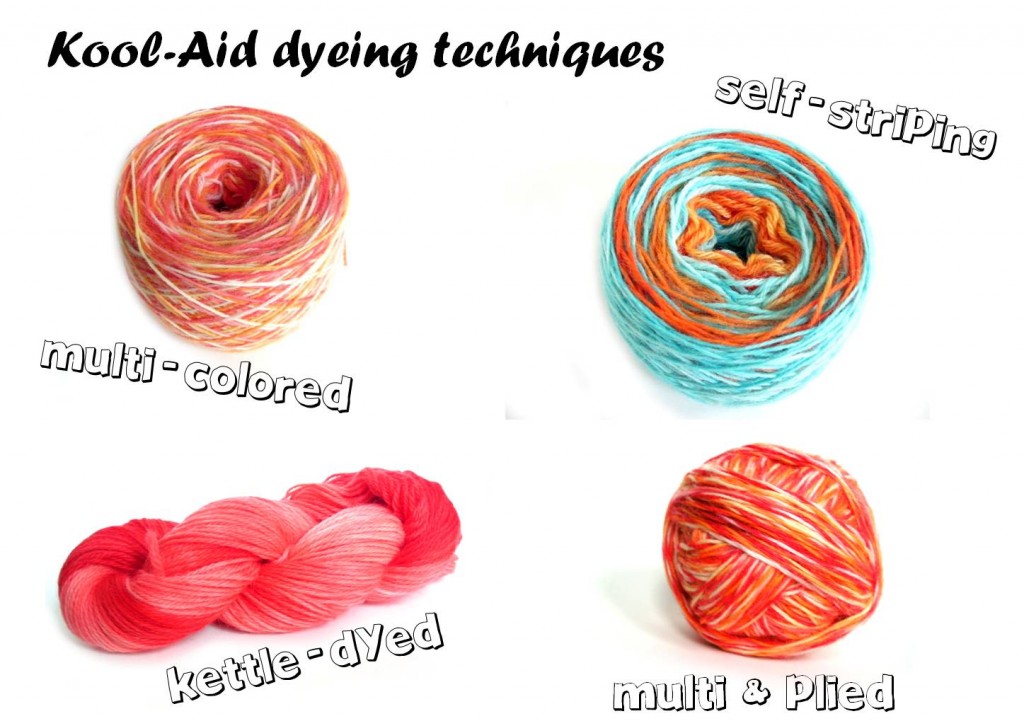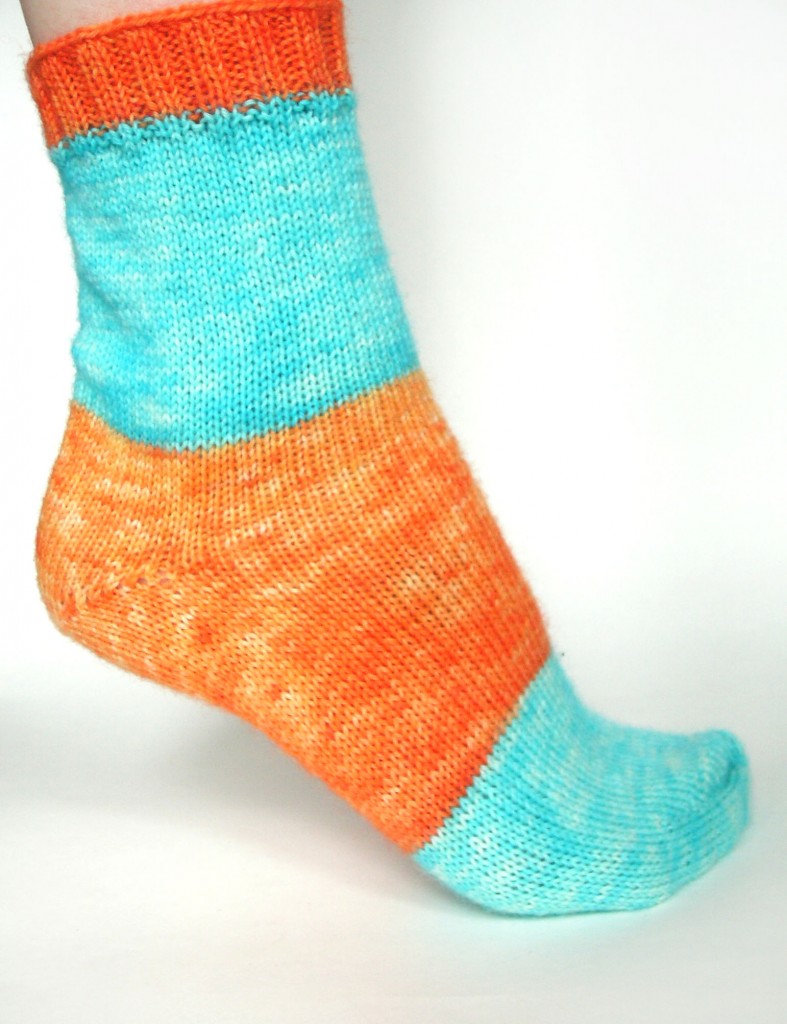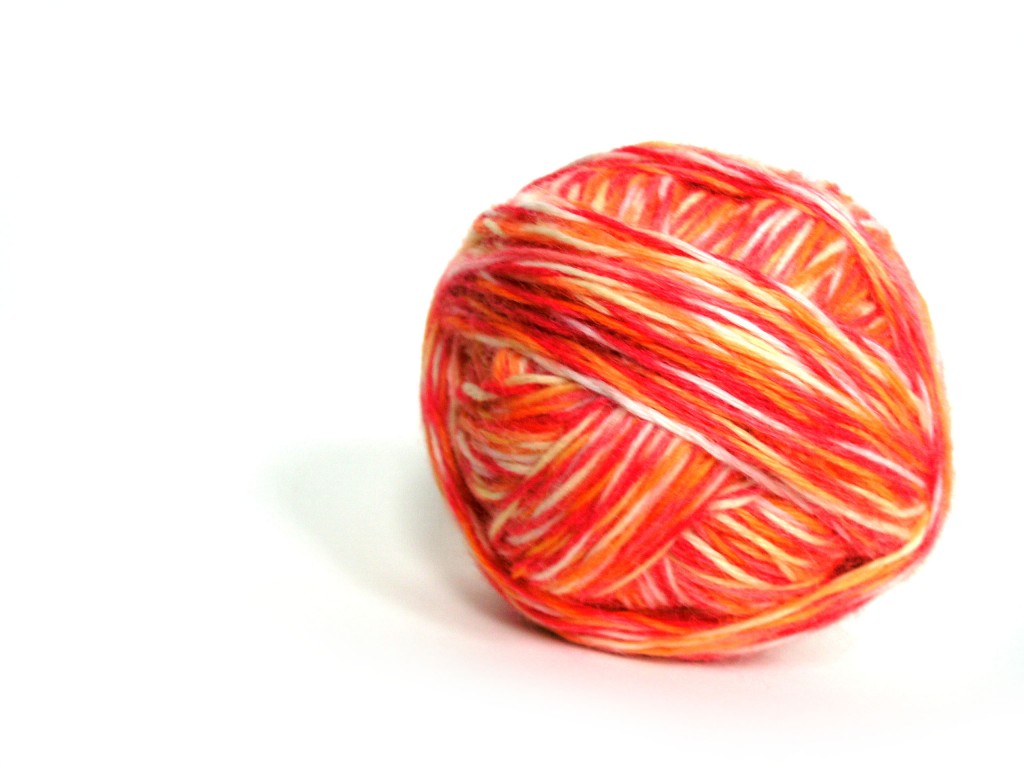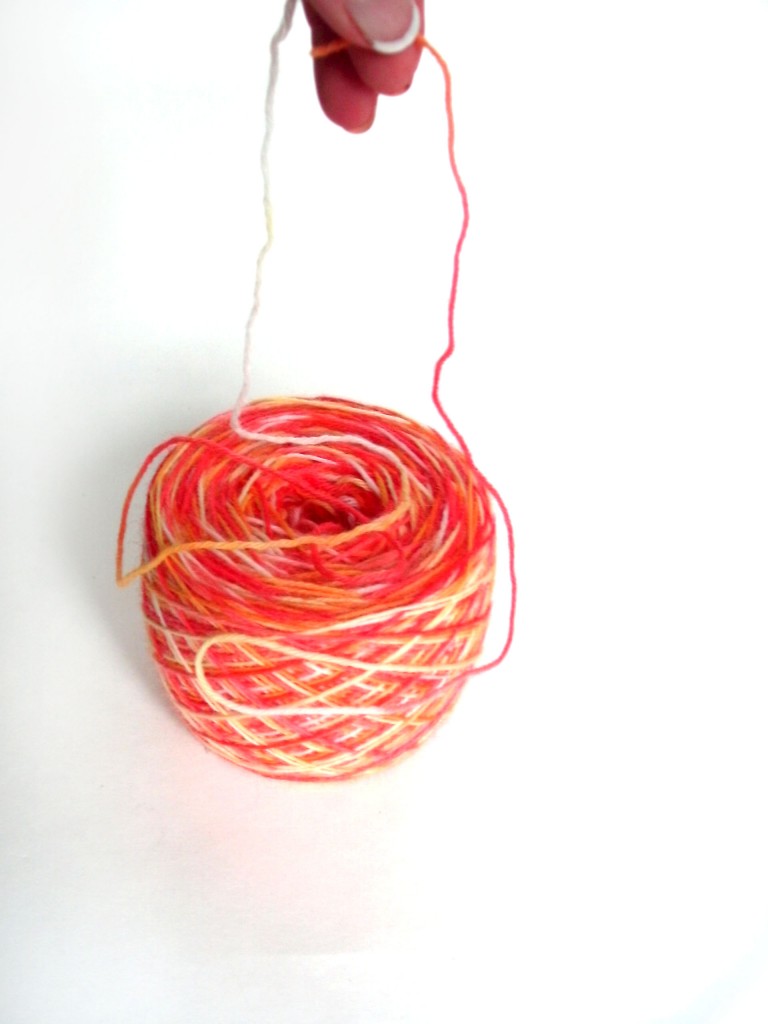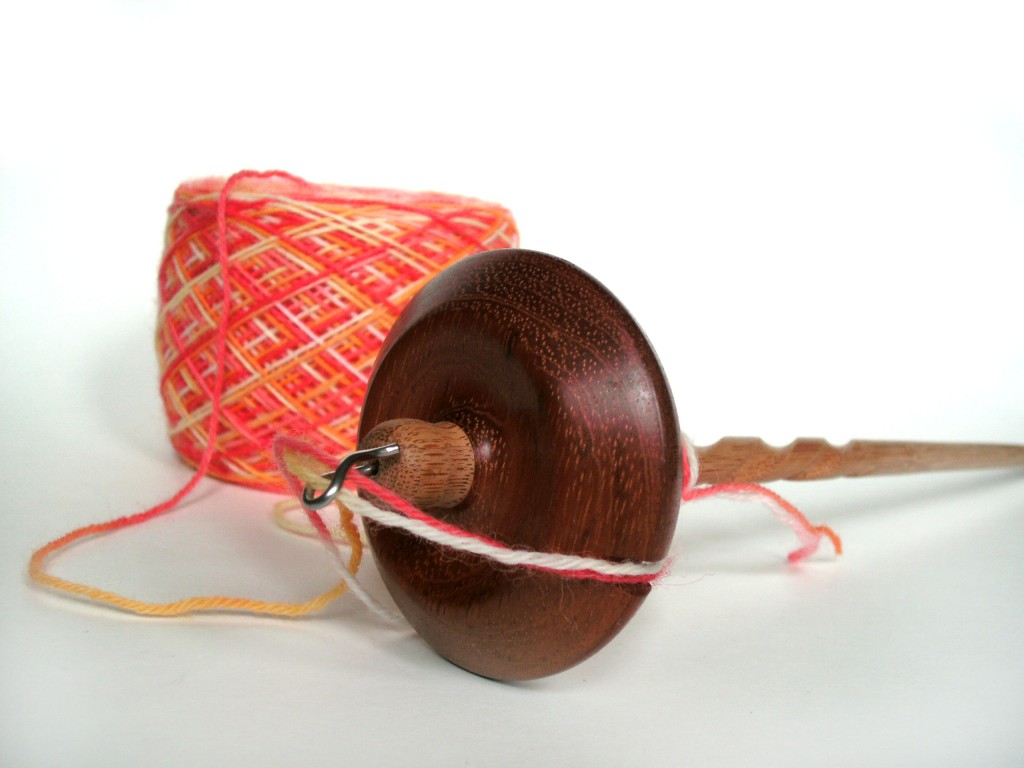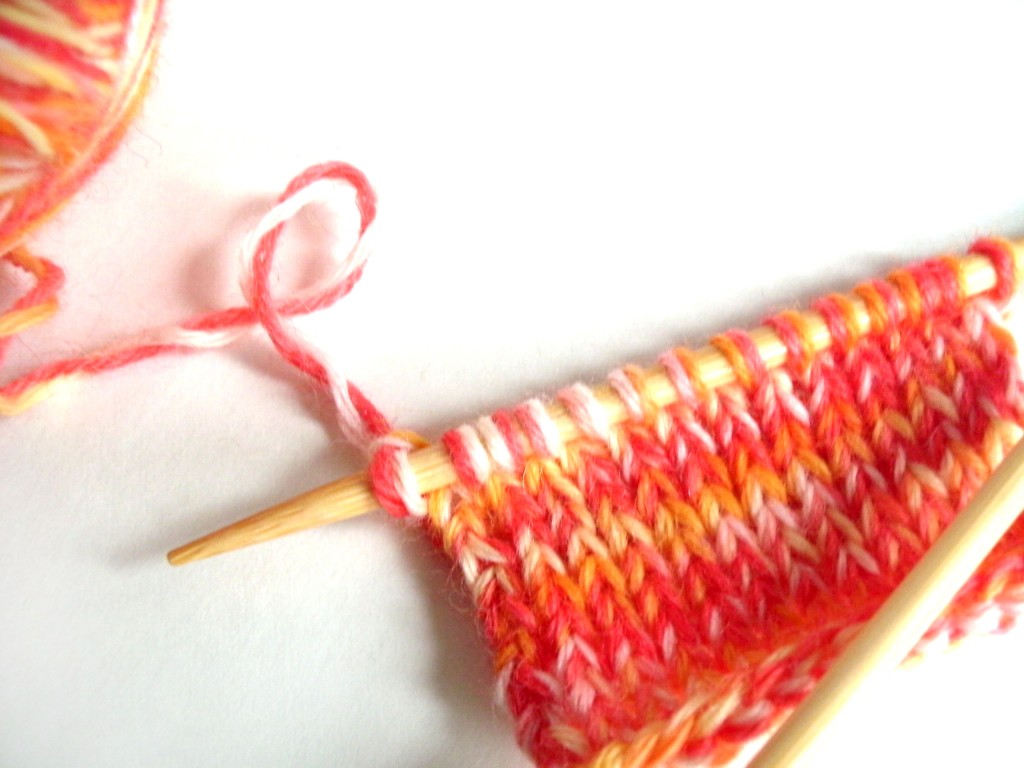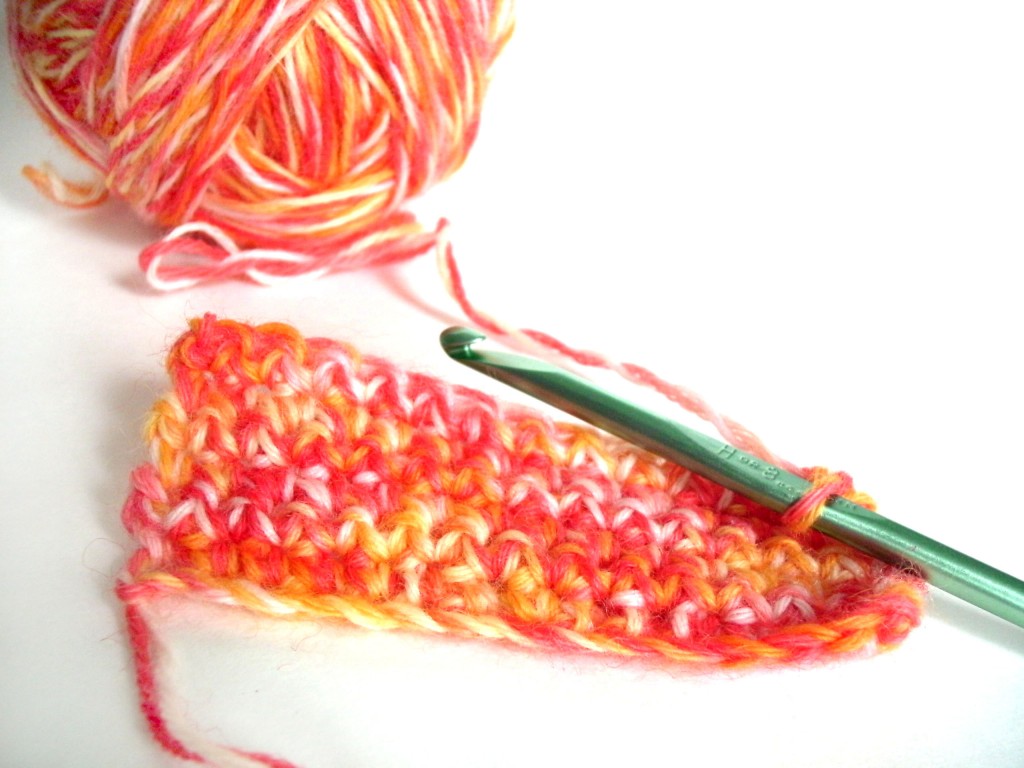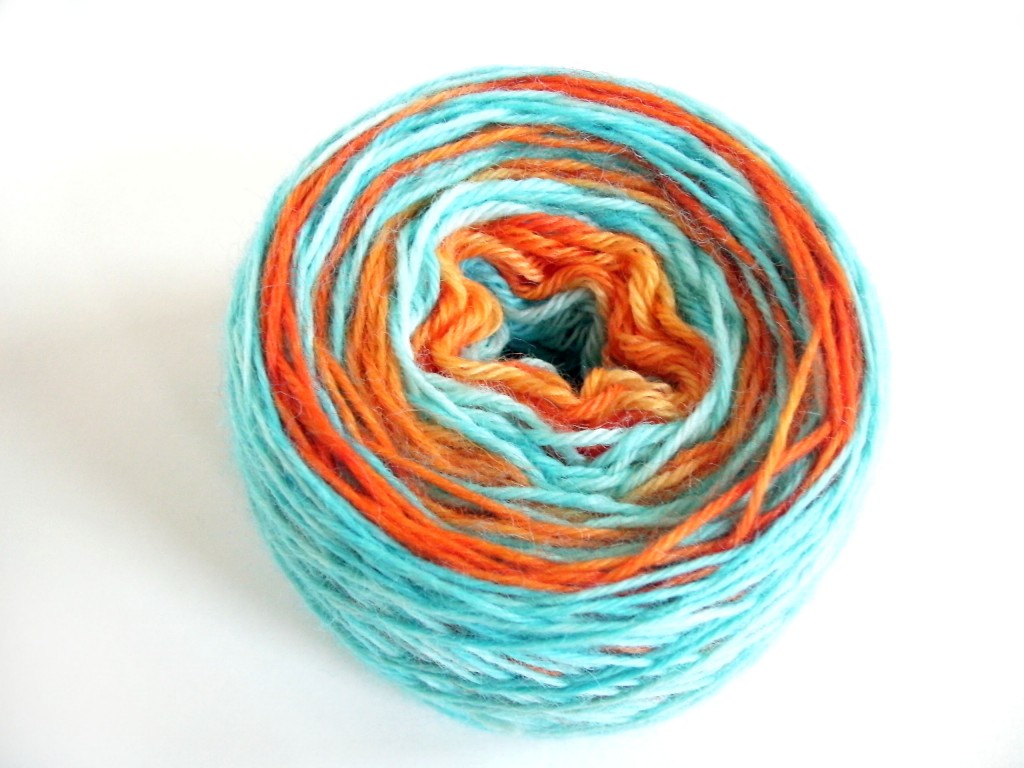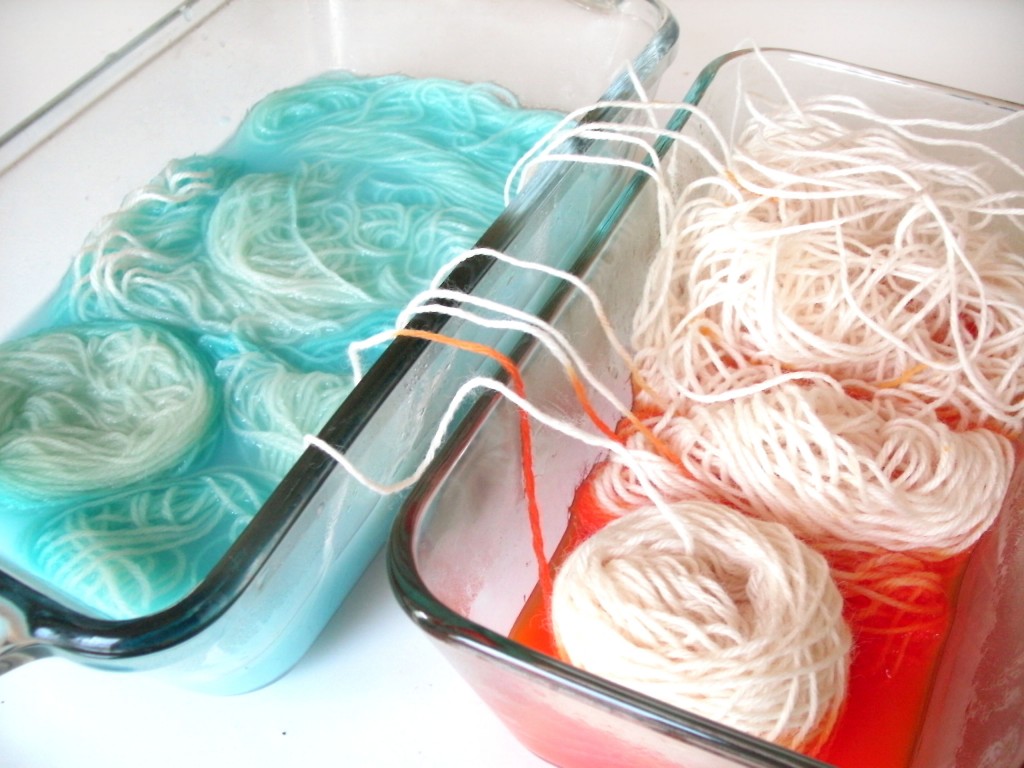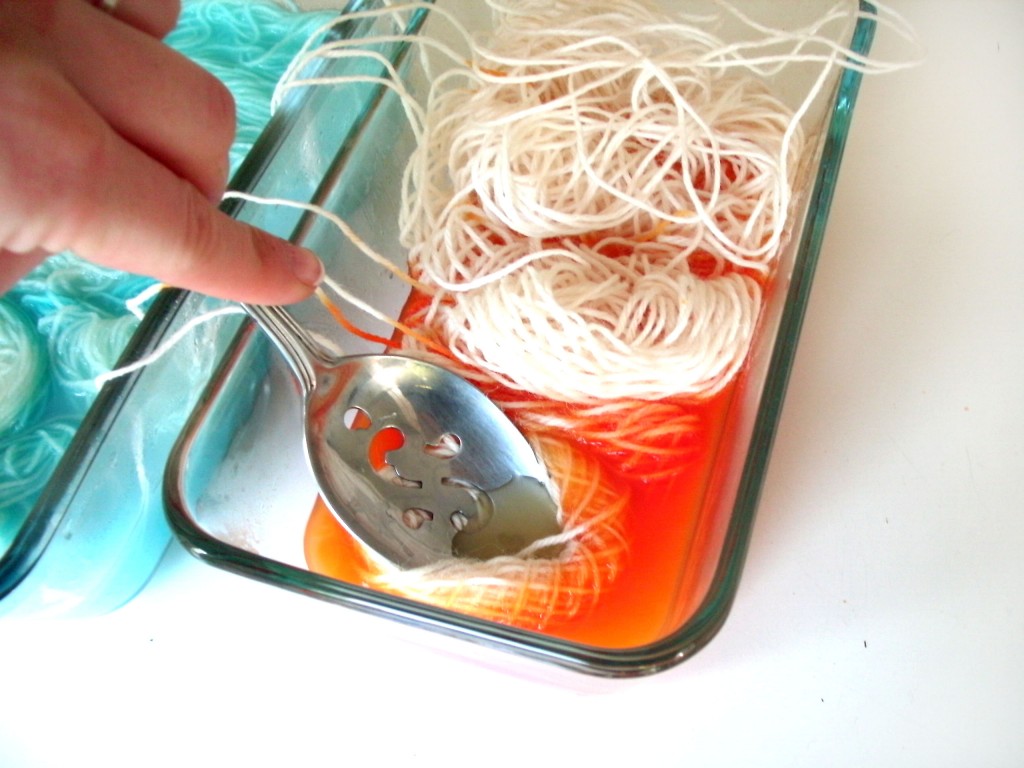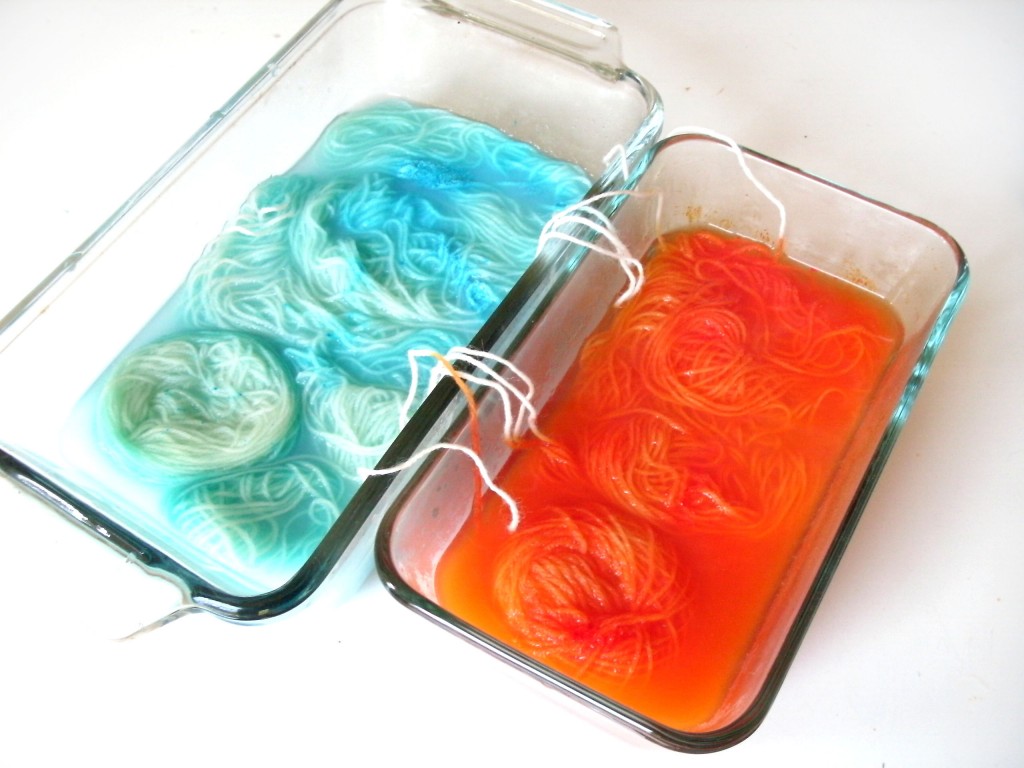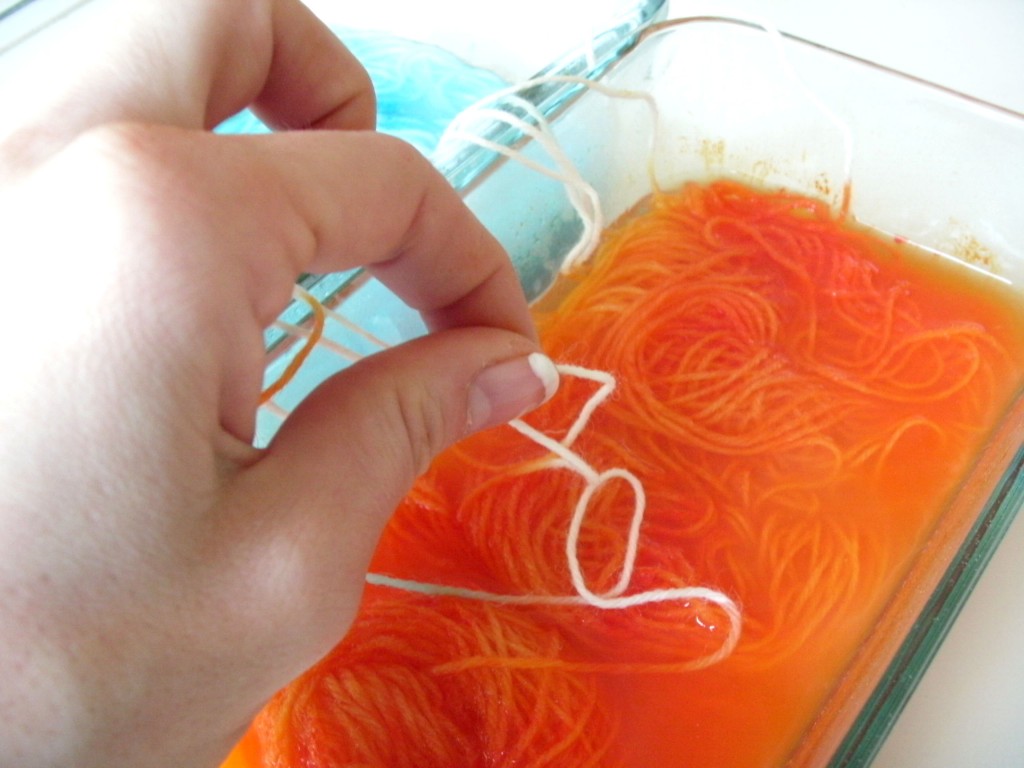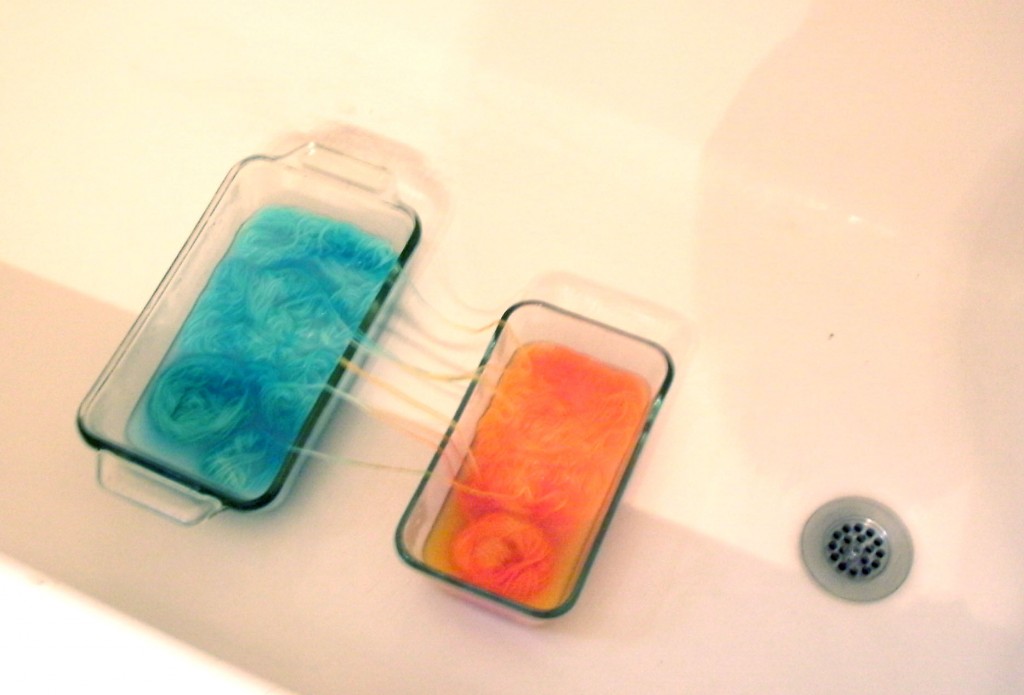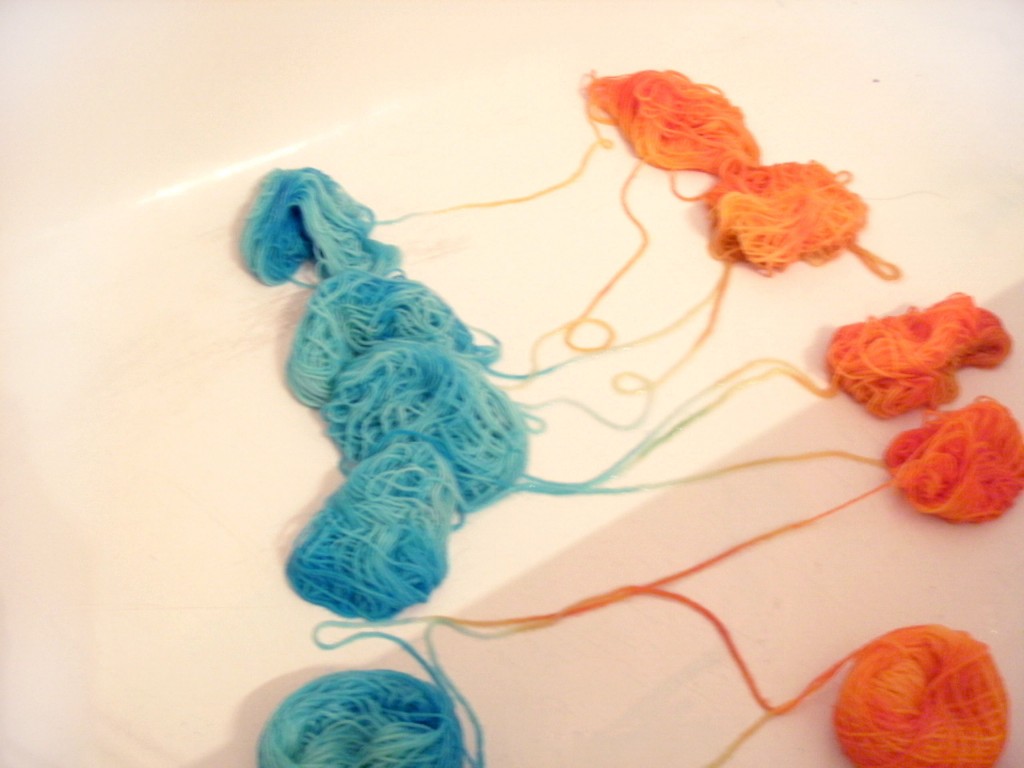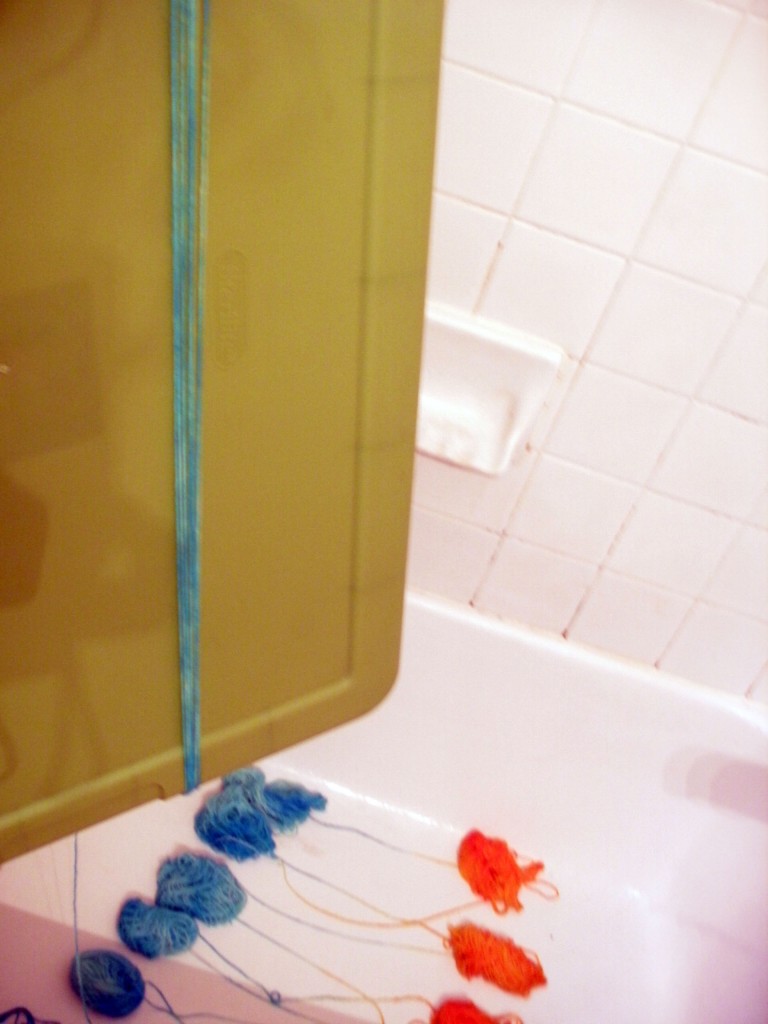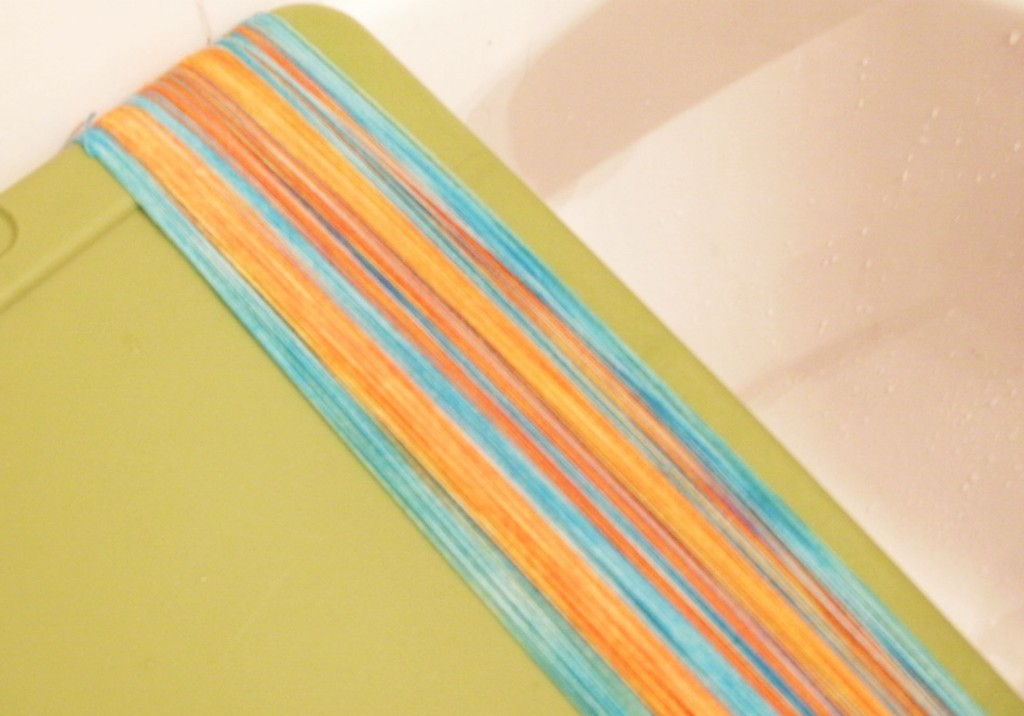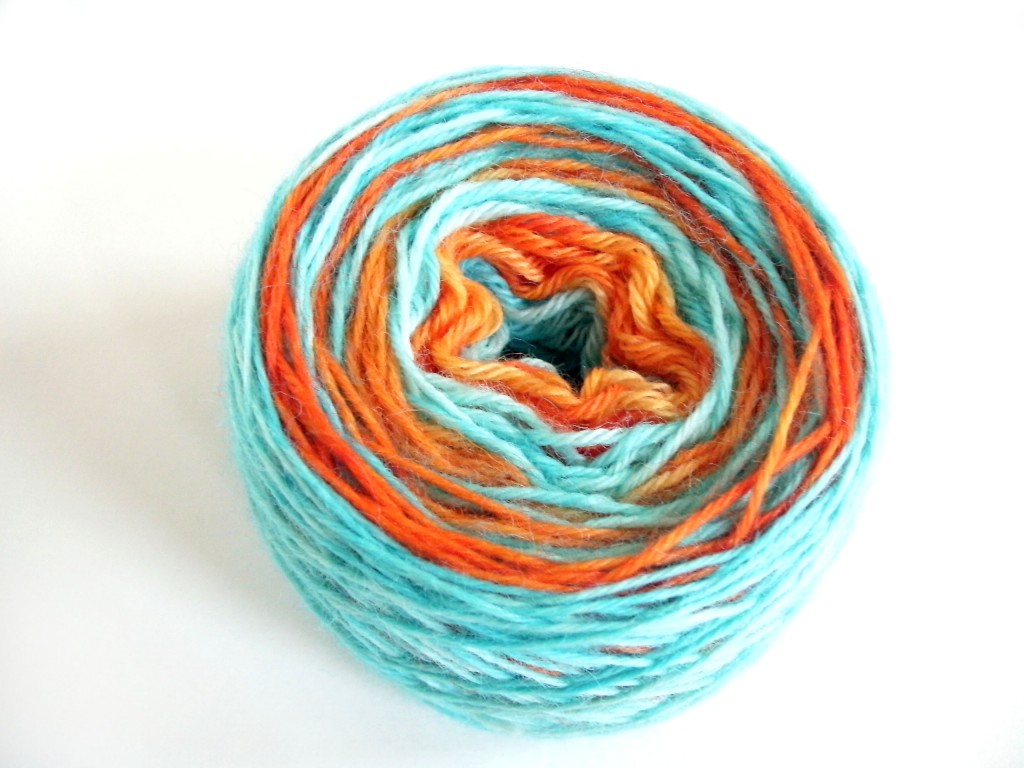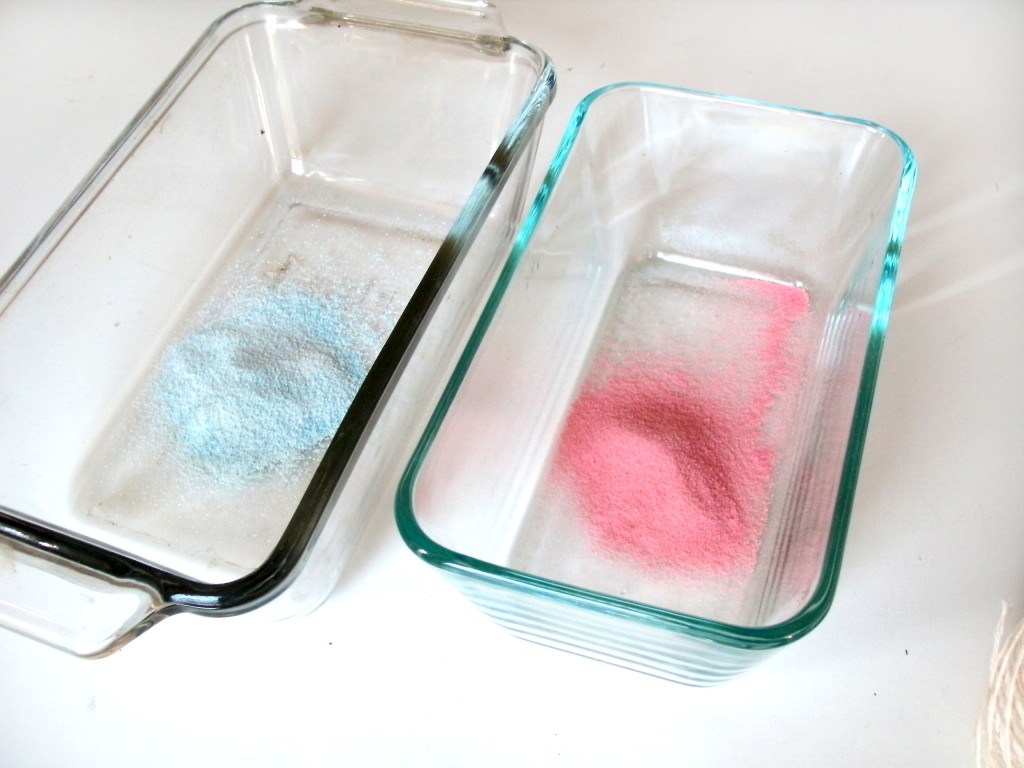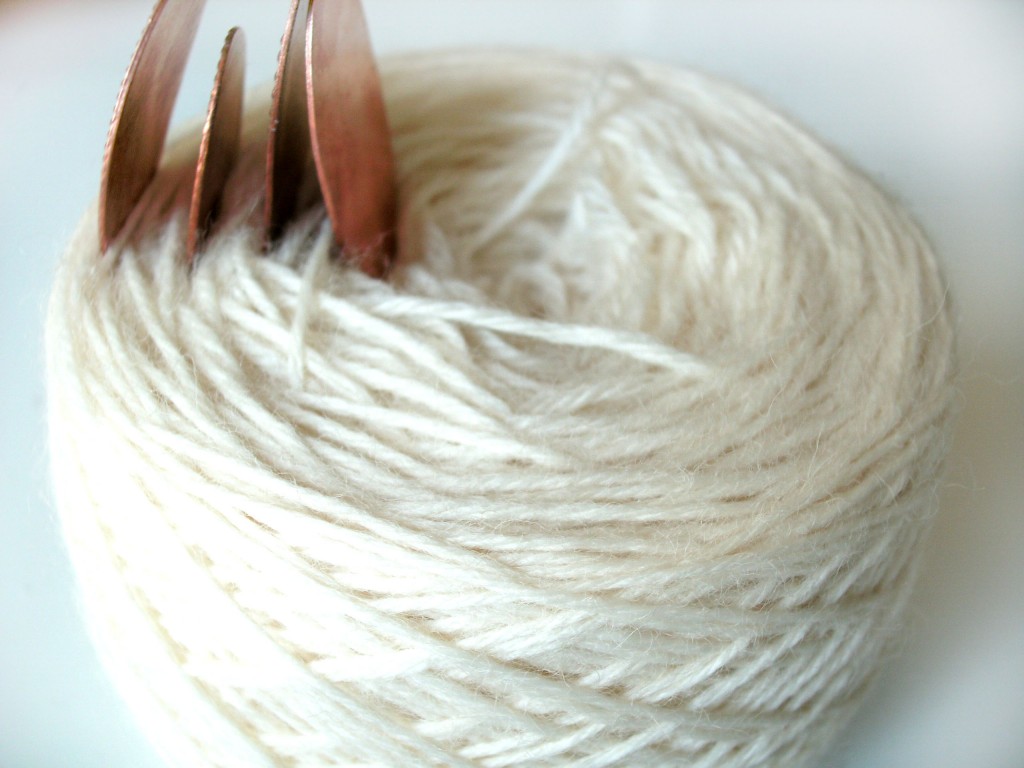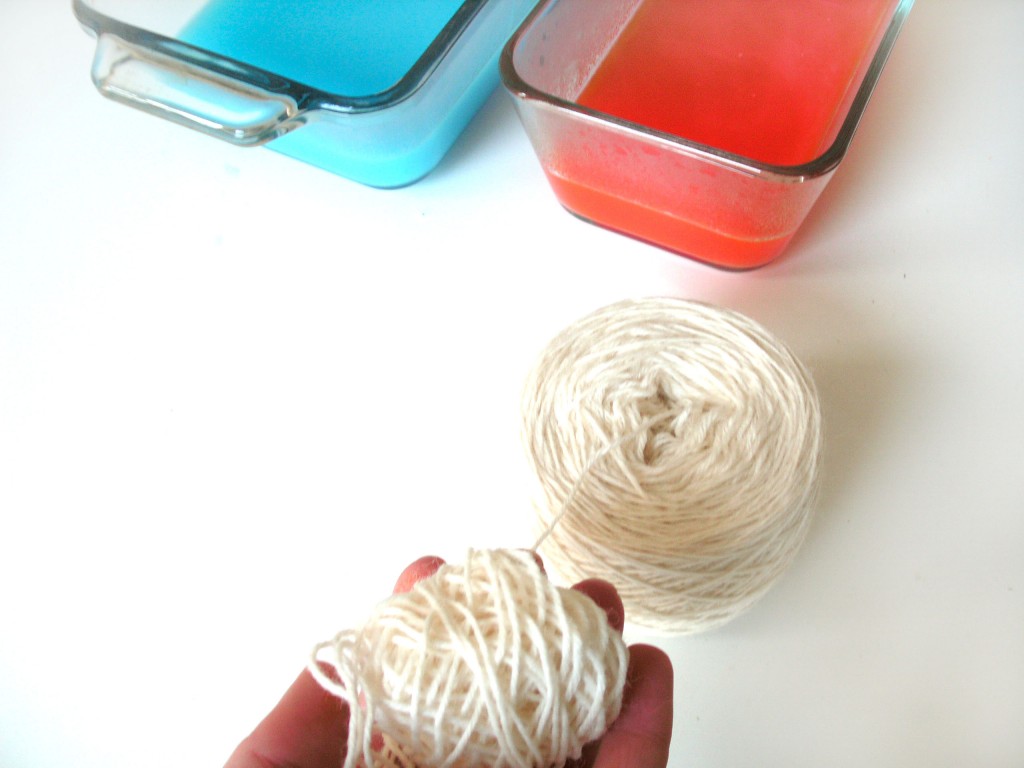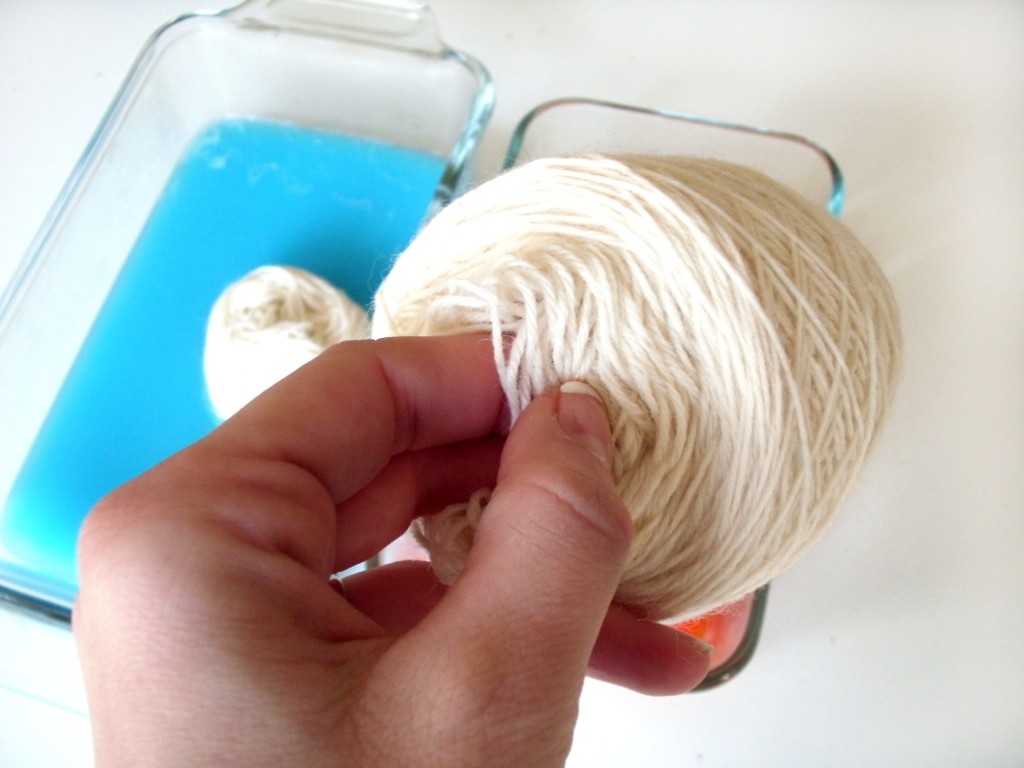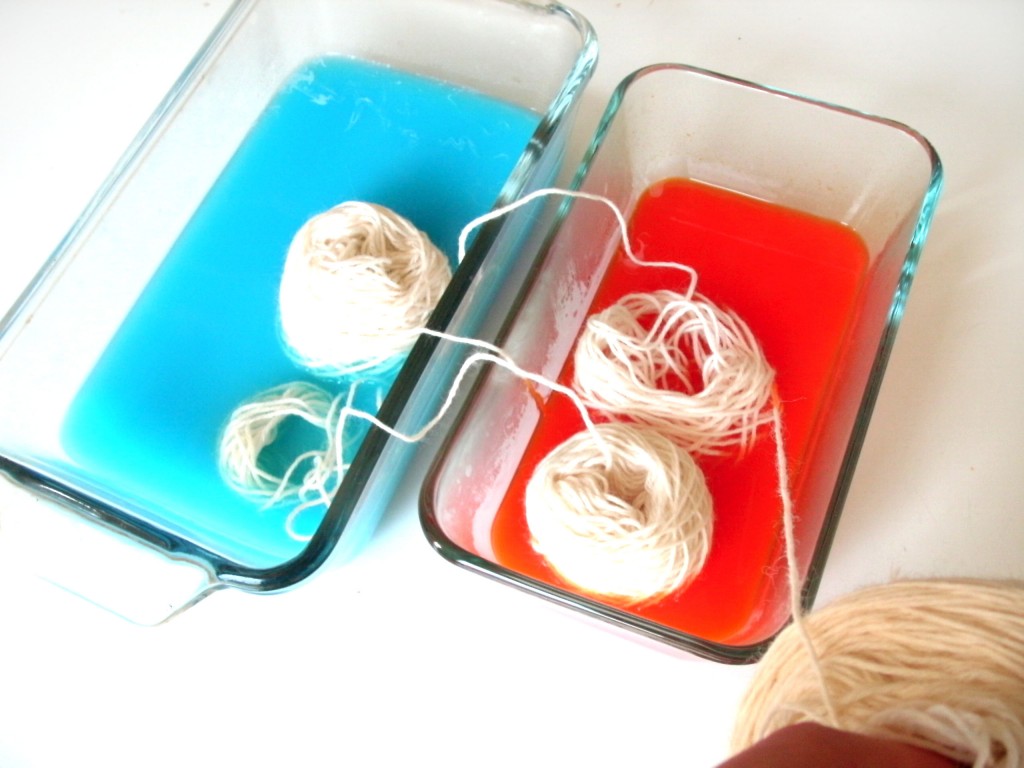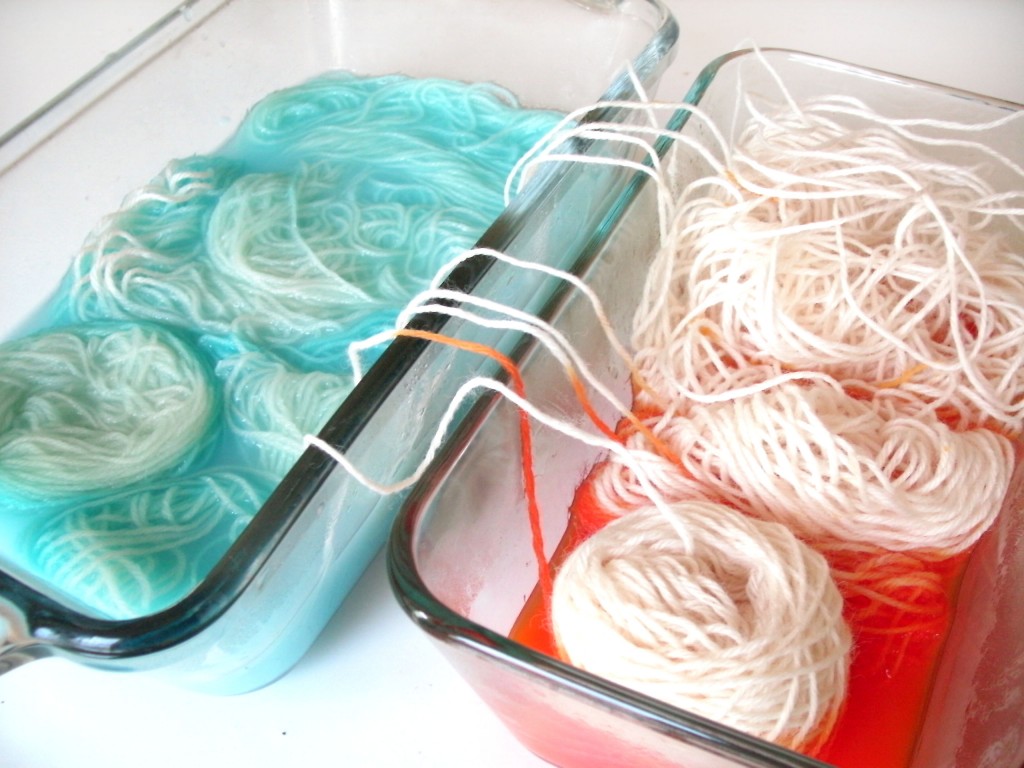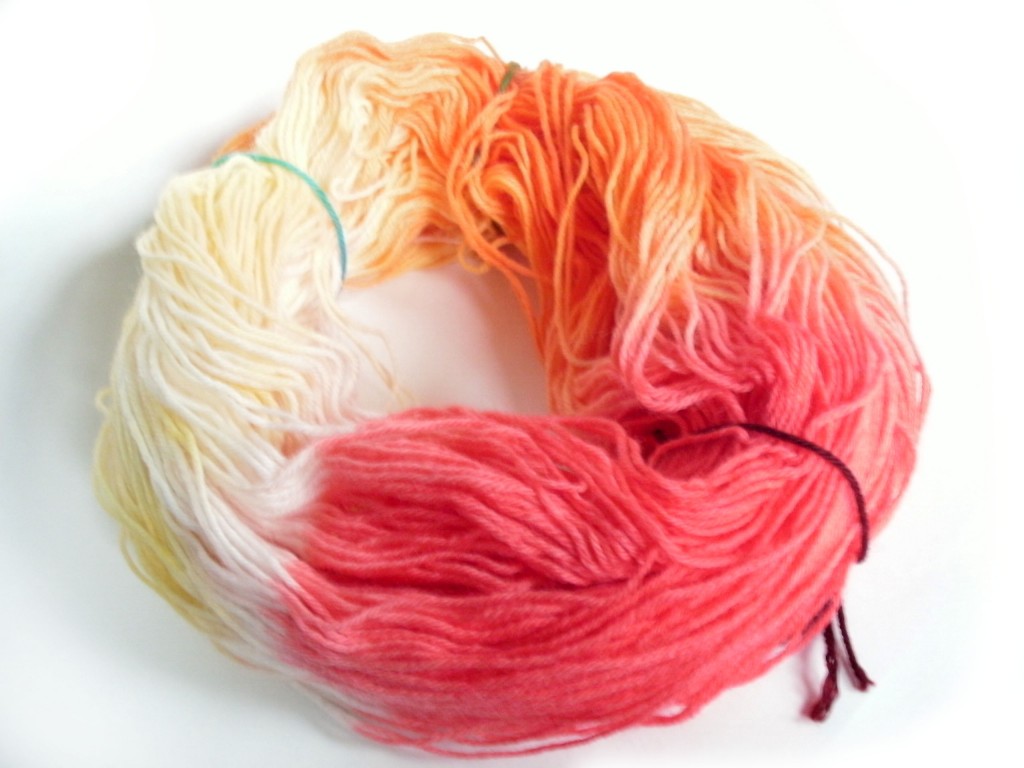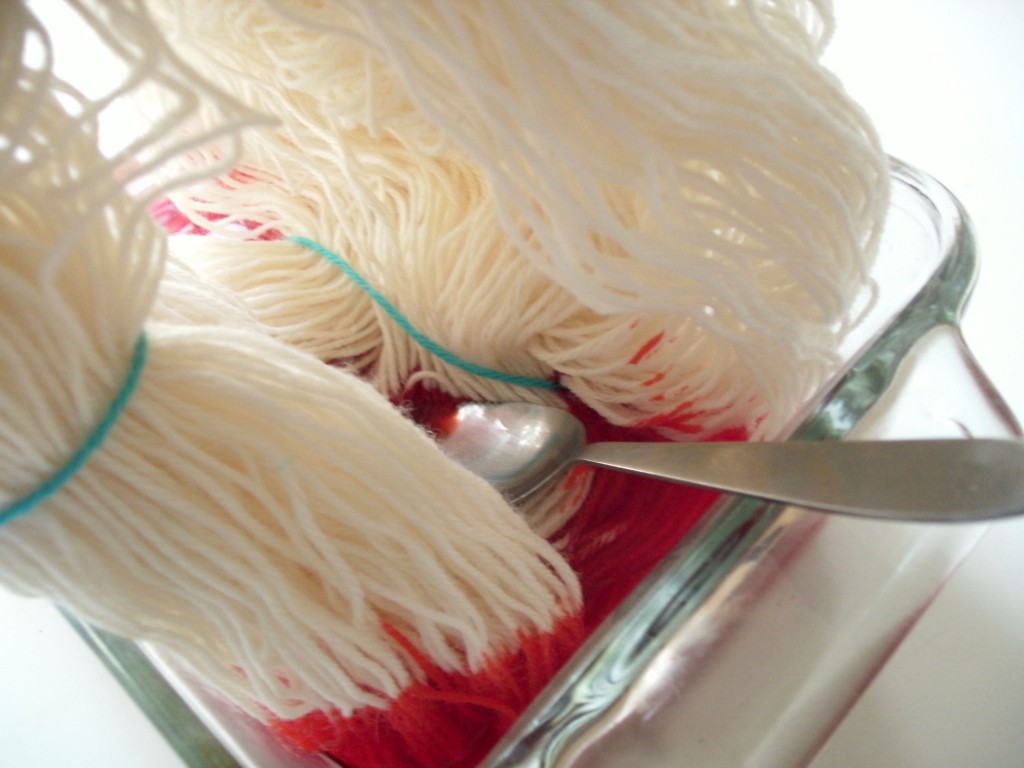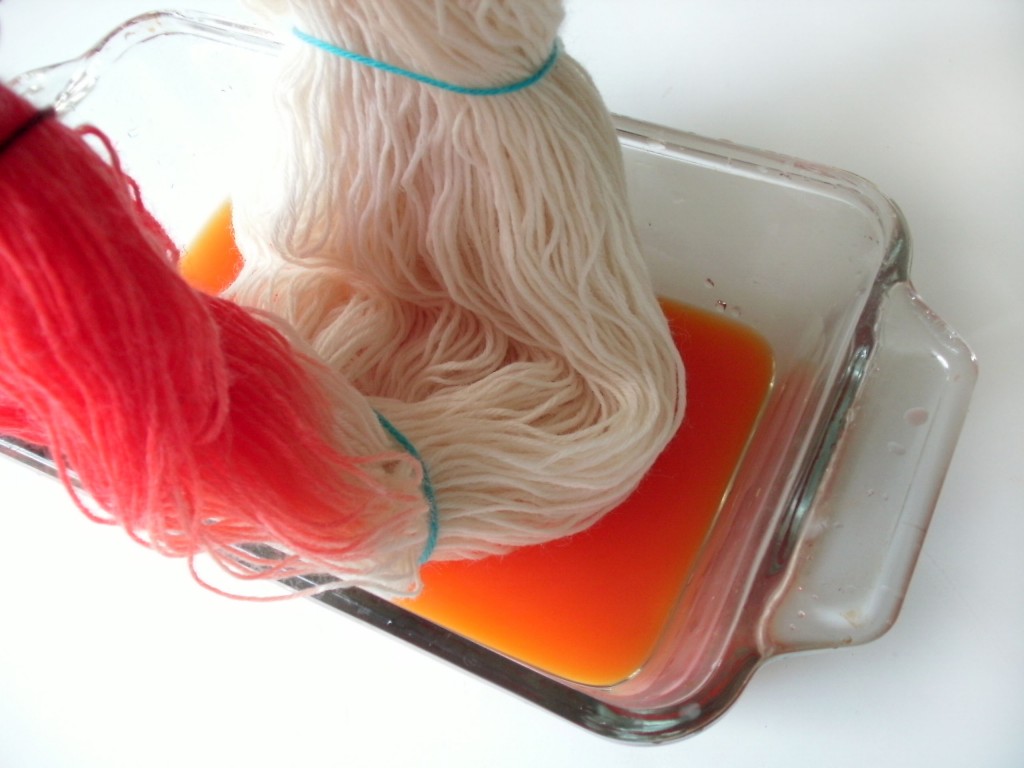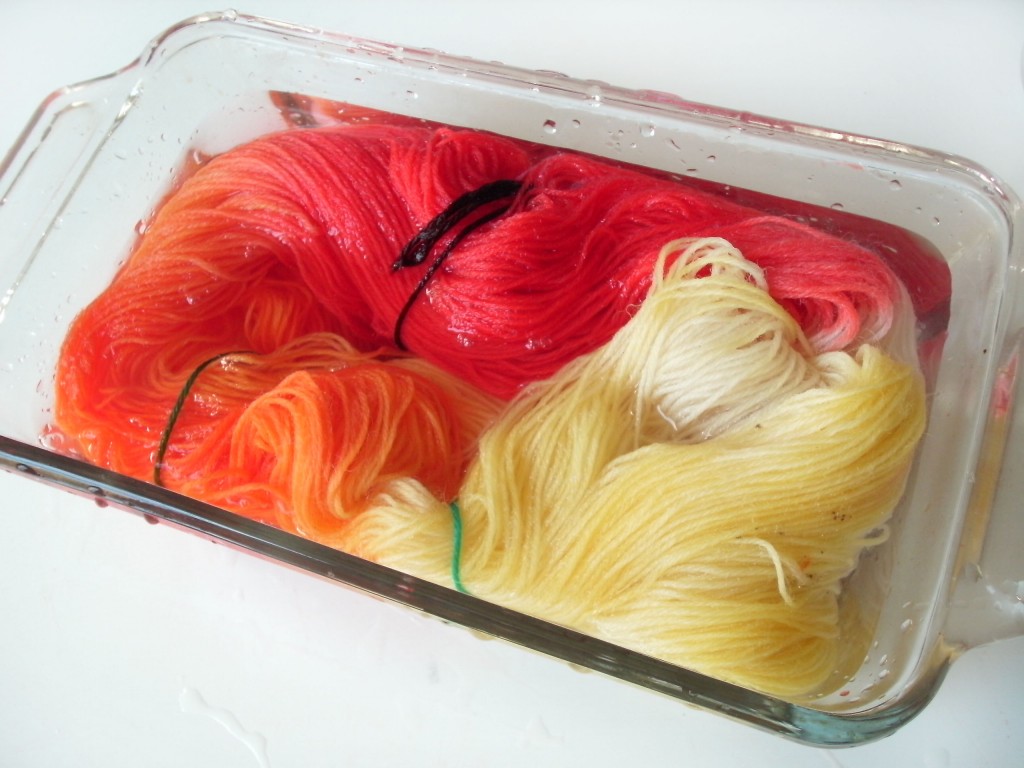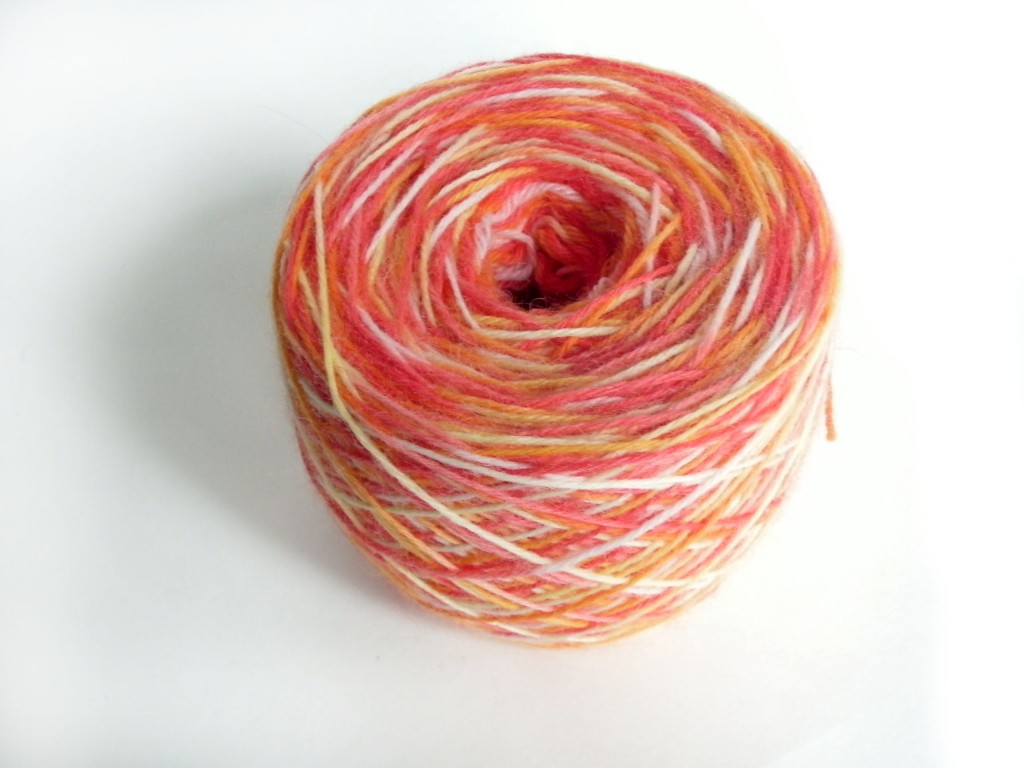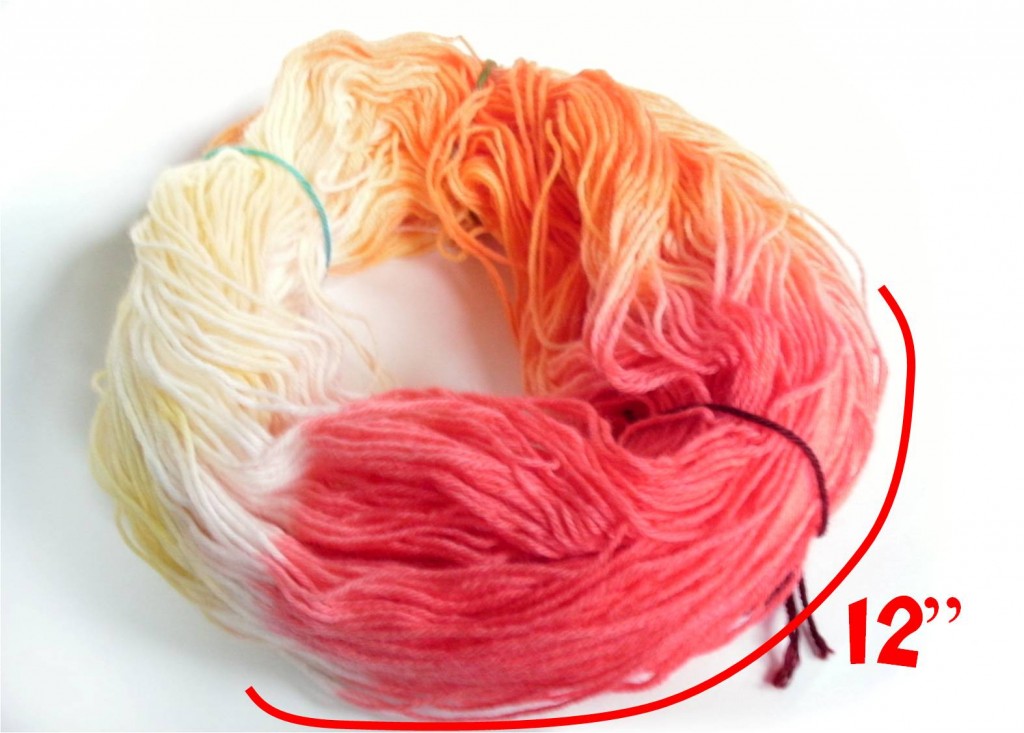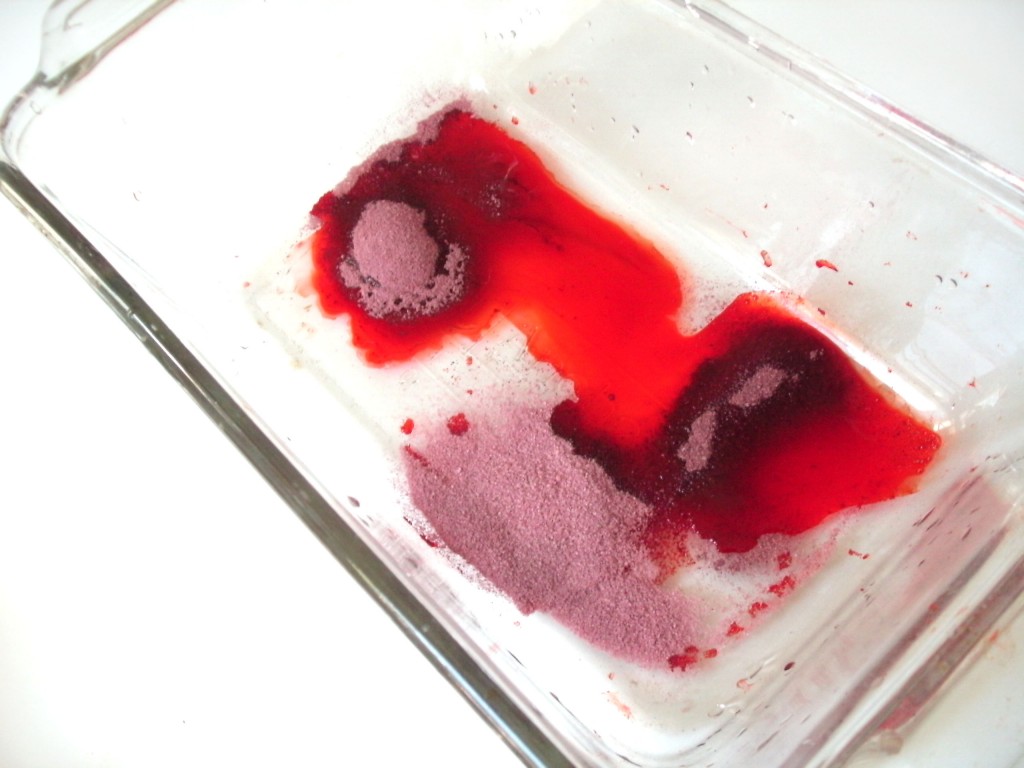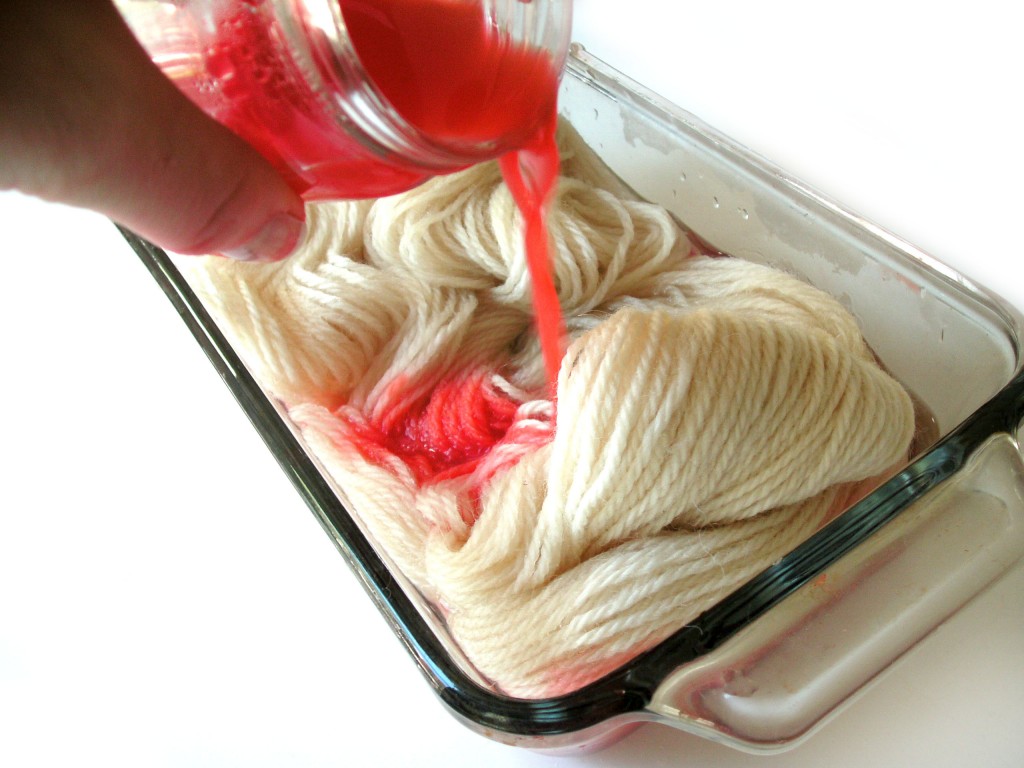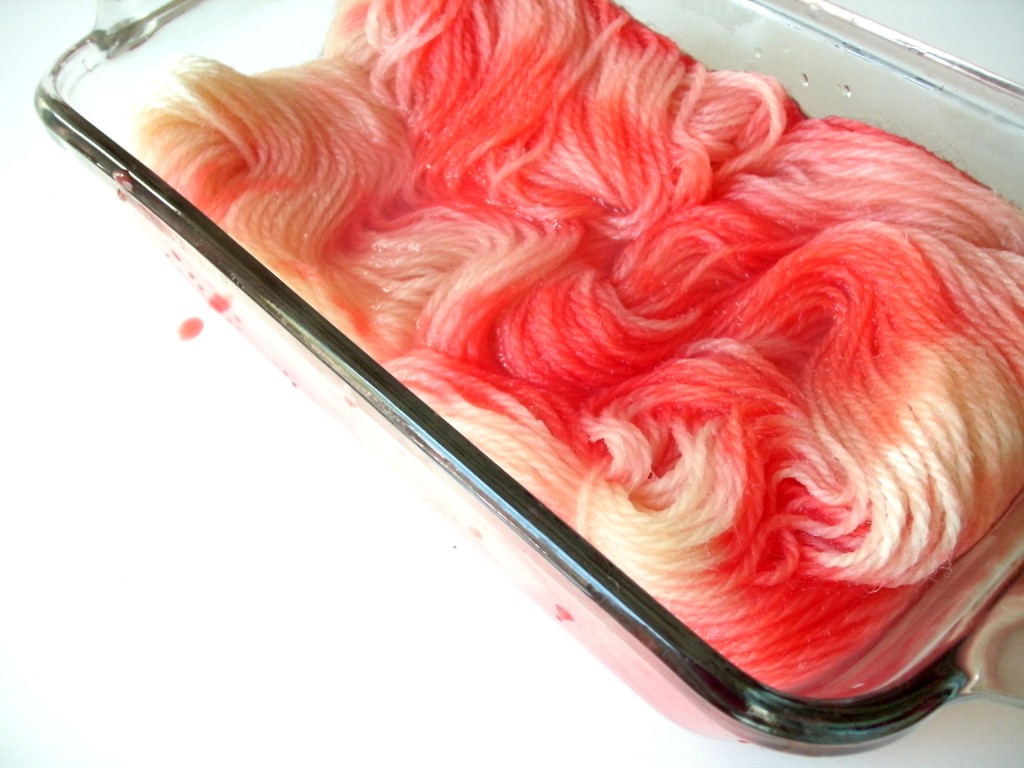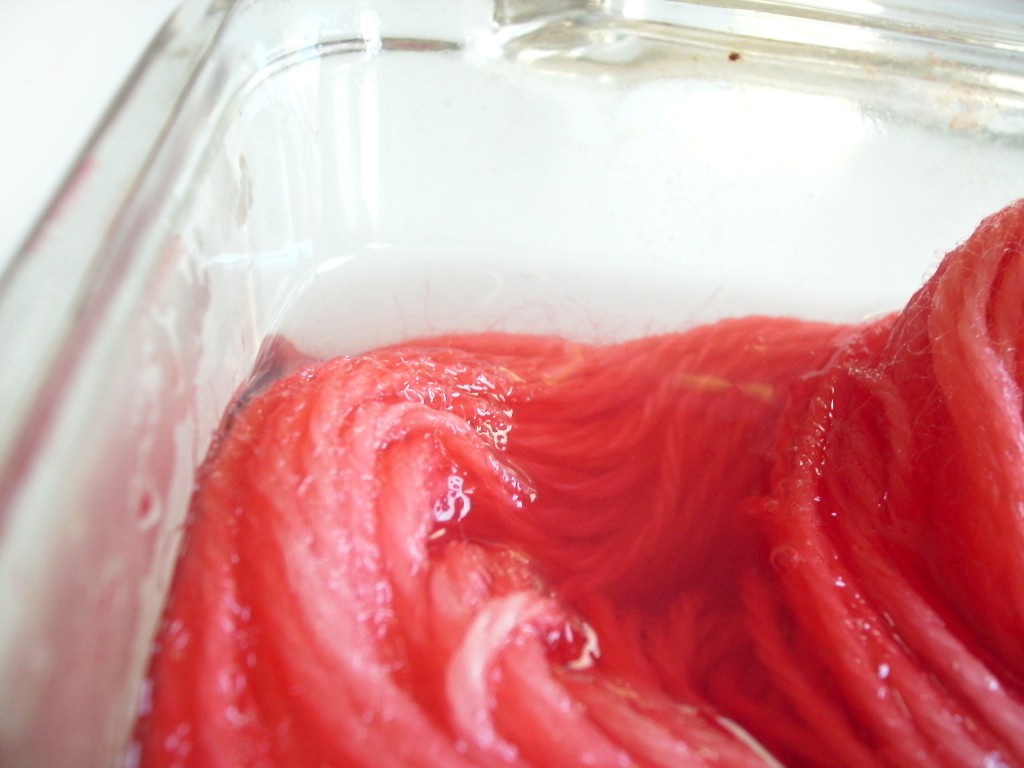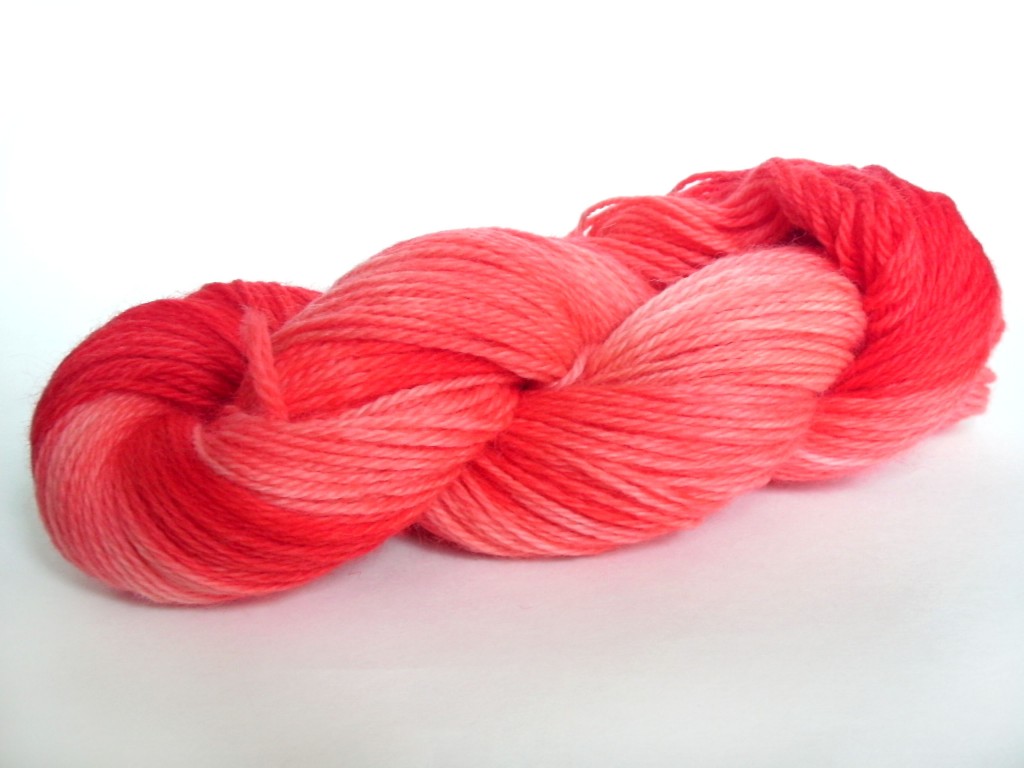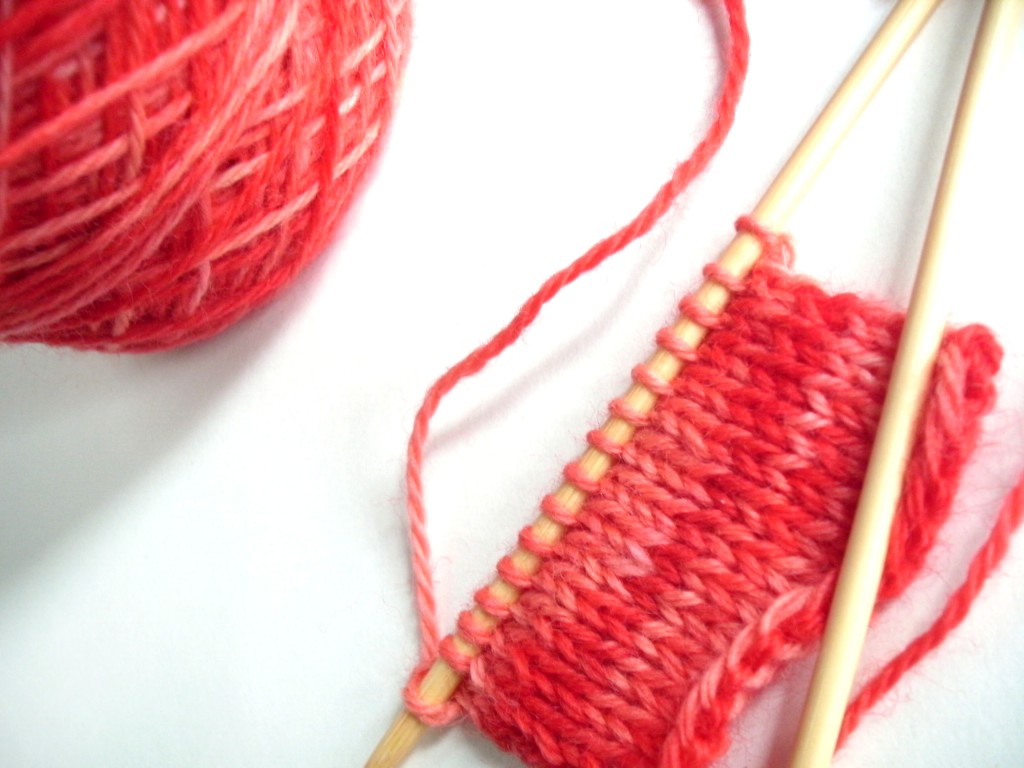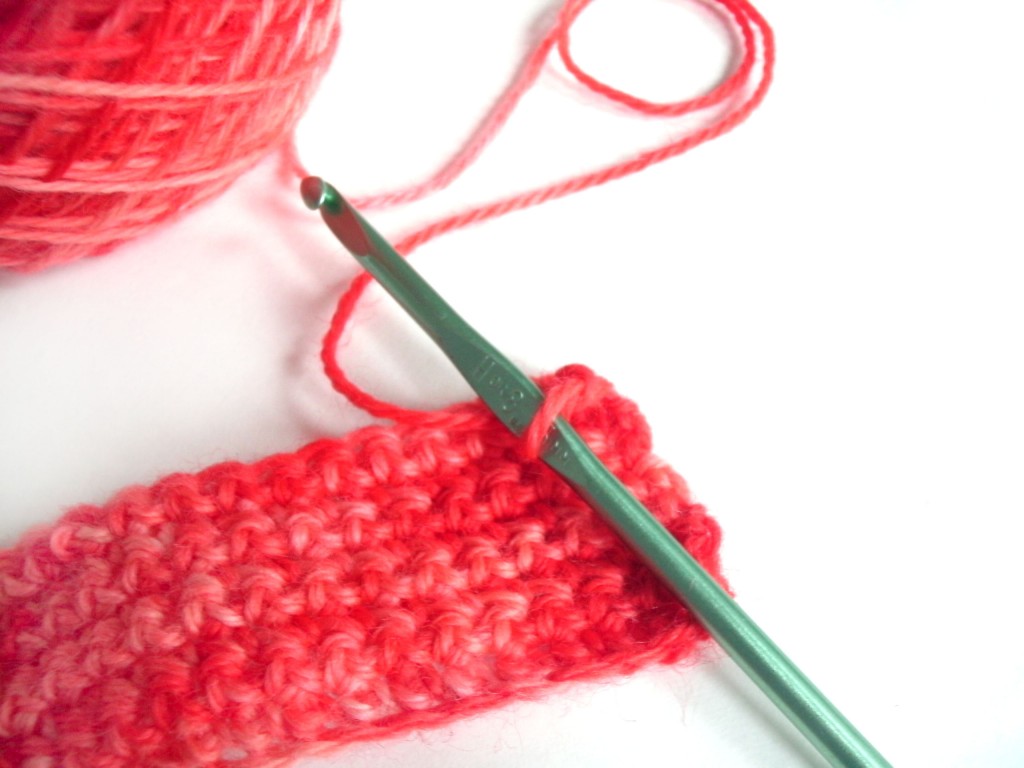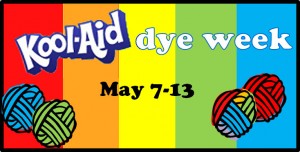
I’m so excited to kick off Kool-Aid Dye Week! Each day, I’ll be posting about a new technique for using Kool-Aid to dye yarn… all you’ll need is some natural-colored yarn, a few shades of Kool-Aid and some hot water. Easy!
Today, I’ll talk about the basics you need to know to get started.
Select your Yarn
Kool-Aid is primarily a drink (I’m just as surprised as you are!), so it’s not the most powerful dye on the market. I like Kool-Aid because it’s cheap, non-toxic and comes in lots of bright colors.
That said, it has some limitations. Your best bet is to stick with an animal fiber (like wool or alpaca), which will happily slurp up any dye you give it. Plant fibers aren’t as easy to dye, so I wouldn’t recommend using them.
Need a refresher on fiber types? I highly recommend The Knitter’s Book of Yarn, which has a great introduction to fiber types, including their happiness with taking dyes.
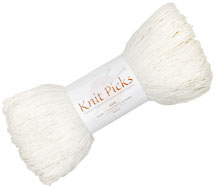
I recommend using an undyed (or natural) yarn to start out with. Knit Picks has a whole line of undyed yarn bases to choose from, and you’ll occasionally find other brands with a couple of blank bases at your LYS. An undyed yarn is preferable to a plain white yarn, which has probably been bleached, and may not soak up color as well.
However, my overwhelming recommendation is to try a test swatch first! I’ve had success with white yarns, as well as overdying (i.e. dyeing a yarn that’s already colored with even more dye) yarns with Kool-Aid, so feel free to experiment!
Selecting Colors
There are a lot of Kool-Aid colors available, and non-name-brands will also work (I’ve heard rumor that there’s a tamarind flavor of drink available in Hispanic markets that is coveted by dyers!).

So, head on over to your supermarket and start choosing! Take note: the color that the drink will be isn’t necessarily the color of the packet, but you can look at the color of the drink that Kool-Aid Man is holding as a clue. (I learned this lesson the hard way: I bought a stock of Tropical Punch flavored Kool-Aid thinking it would be blue… but it’s actually red. So, check out the color of Kool-Aid man’s drink!)
There’s an awesome review of Kool-Aid colors in this article on Knitty, so be sure to have a peek! If you’re unsure, a Kool-Aid Variety Pack may be the way to go!
Dye a test-sample
Every fiber reacts to the dye slightly differently, so the best thing to do is a little swatch to see what color your yarn will turn out to be. If you’re the experimental type, feel free to skip this step… as long as you don’t mind being surprised!
Step 1: Mix your Kool-Aid
There are two basic ways to dye with Kool-Aid: 1) Mix the powder with boiling water and dip your yarn in, or 2) mix the powder with the water to dissolve, then dip yarn in and heat (either by microwave or stovetop) to set the color. Most things I read online suggest the second, but in my experience, the heat present when you add boiling water is enough to set the color.
Whichever way you pick, I suggest doing your test swatches the same way you plan to do your final dyeing… just so there will be no surprises. In my photos, I’m using the boiling water technique:

Step 2: Add the yarn!
You can see here, I’ve just stuck in a tiny strip of yarn:

I felt like my tiny piece was enough to give me an idea of the color… but feel free to add in more yarn if you’d like.
Step 3: Check out your color!
Now take out your little piece of yarn and see how it looks!

You may want to make a little notebook to keep track of your yarn swatches and which color Kool-Aid you used.
You don’t have to stick with one color! Feel free to mix colors together and do swatches for these experimental colors, too.
Put your yarn to the test
Before you begin a big project, you might want to see how your yarn and color holds up. Are you using a machine-washable yarn, and are hoping the color holds up in the washing machine? Go ahead and wash your test yarn! It’s the only way to see how the color will perform, and will prevent any future disappointments.

In my experience, the color holds pretty well… although I’m the sort who hand-washes my woolens. I’ve had one kool-aid dyed cowl for over 2 years- and the color is still going strong!
Are you excited about the possibilities?
I am! I’m in love with Kool-Aid dyeing!
Tomorrow, we’re going to start dyeing skeins of yarn! I’m going to show you how to achieve the look of a kettle-dyed yarn (i.e. fancy-pants, Artisan-dyed yarn) with your Kool-Aid… you won’t want to miss it!
Best,
Stacey
